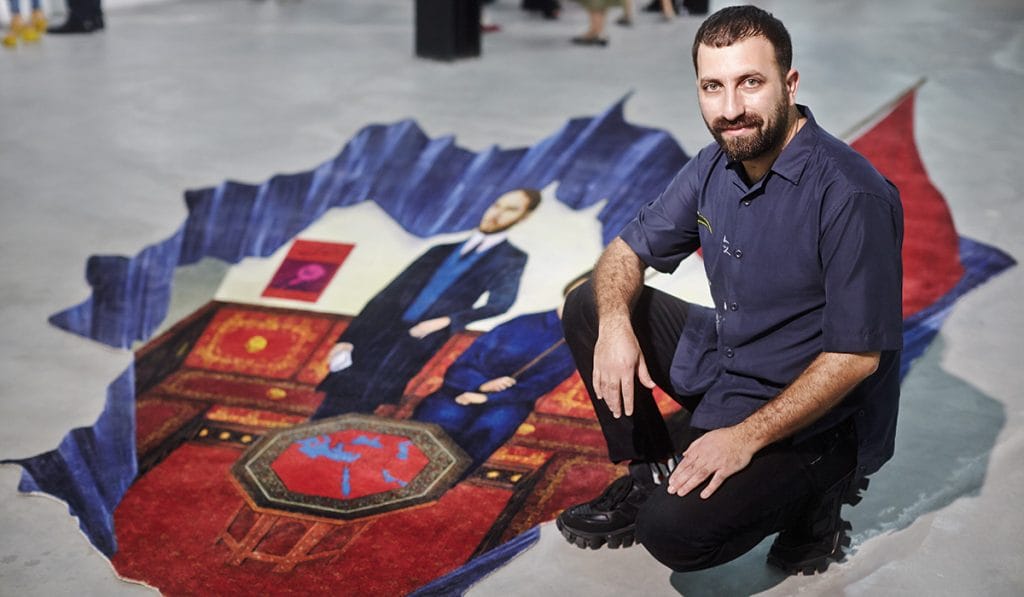Ahmet Ogut is a Turkish-born sociocultural artist of Kurdish descent who works with a broad range of media including video, photography, performance, installation, and printed media. He lives and works between Berlin and Amsterdam. He often employs humour to address complex issues, weaving loose narratives that connect collective memories, local histories and cultural identities.
His work is rooted in the reality of everyday life and he uses the symptoms of social and political ideologies, systems and histories to produce ambitious projects that enact subtle shifts in perspective. Ogut foregrounds the status and value of labour within the production of art, provoking a critical consciousness that calls into question the ethical and relational implications of the role of the artist and their work within the world.
In Kuala Lumpur recently in February to host his first ever solo exhibition in Malaysia at the Weiling Contemporary Gallery, The Gardens Mall Kuala Lumpur, Ogut explores the realities of modern life via four mediums: tapestry, mail art, drawings, and video. His overall compilation asks audiences to ponder over the construction of global history, and the effects of fixed perspective and misrepresentations.
Entitled ‘History Otherwise’, Ogut explains that the exhibition unveils history through the perspective of the “subaltern†– revealing the realities that we often overlook, or consider invisible. Comprising four artworks of different mediums – tapestry, mail art, drawings, and video – the exhibition attempts to alter the Eurocentric way of looking at history. Ogut elaborates: “Each work unfolds stories that shape our current times seen through the lenses of various personages and societies, and poses fundamental questions surrounding history as we know it. Who should write the global history? Who is it destined for? How do artists take part in remapping the connectedness of the world?â€
Spanning more than six meters in the gallery space is Ogut’s more recent work entitled History Otherwise: Ottoman Socialist Hilmi and Ottoman Women’s Rights Defender Nuriye (2019-2020), exhibited for the first time in the form of tapestry. This piece invites viewers to discover two invisible aspects of the late 19th-century Ottoman era; the Socialist heritage and the women’s liberation movement. The work depicts two central figures set in an Ottoman style living room: Hüseyin Hilmi Bey, founder of the Ottoman Socialist Party, as well as Nuriye Ulviye Mevlan Civelek – one of the leading founders of the Ottoman Society for the Defense of Women’s Rights.
Meanwhile, pieces of personal experiences are laid bare with his work entitled Fantasized Fantastic Corporeal World (2019). “These are a series of pencil drawings on paper accompanied by typewritten text. Each frame depicts a true yet ironic story, the result of tools enforced by the any nation-state; passports, borders, embassies, and the state itself,†revealed Ogut. Highlighting issues from racial segregation to border control, every vignette reflects the transitory element of the story at a given time, whilst suggesting a possible change in outcomes which could prevail over – or generate – a different narrative



